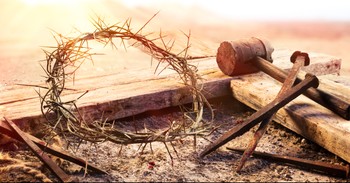John Knox's Vision for Reformation
When Knox first preached, his sermons consisted largely of fulminations against Roman Catholic practices. They gave his listeners something to protest against, but nothing to put in place of that which they were asked to discard. In 1556, after a visit to Geneva, Knox began to preach a new kind of sermon, a sermon in which he not only tore down the old but showed his listeners that as God's elect they must build a new kind of church in place of that which they removed.
Many nobles came to hear him speak of the new nation he envisioned, a nation in which the true Kirk (church), with Christ at its head, would triumph. The bishops of the old order trembled. Should Knox have his way-- and his growing popularity indicated he might--they would be robbed of their authority. Typical of the opposition he faced was their summons to appear at the Church of the Blackfriars in Edinburgh and face legal proceedings. He appeared in Edinburgh on this day May 15, 1556.
Pictured below: John Knox preaching before the Lords of the Congregation

Turning the Tables
Perhaps the bishops had hoped to humble him. Instead he turned the tables. Many men of high standing, including the noble William Keith, the Earl Marischal, appeared with him. Regent Mary of Guise (mother of Mary, Queen of Scots) dismissed the summons, and Knox went on to preach to large crowds in Edinburgh. He also wrote her a letter of thanks, asking for toleration of all Protestants. She treated it with contempt.
But Scotland was not yet ready for the Knox brand of reform. The nobles wanted to revive feudalism; the government's advisors sought to put down the Scots with a mercenary army. Once again John Knox left for Geneva where he ministered to fellow exiles. In Geneva he embarrassed Calvin by issuing over the Reformer's objections a notorious "blast" against women rulers. When reform-minded Elizabeth came to the throne of England, Knox had to find a way out of his words because he needed her help.
His Return to Scotland
When Knox returned to Scotland, he thundered loudly for reform. Riots broke out and the rioters smashed Roman Catholic images. These riots provoked war. Several times the reformer and the Queen of Scotland met face to face. Each found in the other a powerful opponent. Knox told her solemnly, "...I am sent to preach the evangel of Jesus Christ to such as please to hear it; and it hath two parts, repentance and faith." Mary did not accept his brand of faith. In the end she abdicated after a scandal and the mysterious murder of her husband. John Knox remained preeminent in the life of his nation. When the constitution of the Church of Scotland was formulated, he was a key player.
Knox is remembered as the "Thundering Scot." More than any other major reformer, his teaching allowed room for revolution. He believed that under some circumstances, duly constituted Christian leaders have an obligation to revolt against tyranny.
Pictured Below: Statue of John Knox at New College, University of Edinburgh

Bibliography:
- Boreham, F. W. "John Knox's Text" in Life Verses, vol 1. Grand Rapids, Michigan: Kregel, 1995.
- MacGregor, Geddes. The Thundering Scot; a portrait of John Knox. Philadelphia: Westminster Press, 1957.
- Knox, John. History of the Reformation in Scotland.
Last updated April, 2007.



